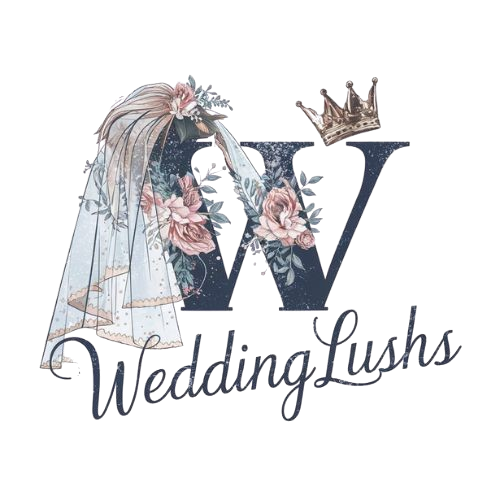Bustle wedding dress features a design element that lifts and secures the train of the gown, creating a gathered or draped effect at the back. This allows the bride to move freely during the reception without the train dragging on the ground. Bustles can be created in various styles, tailored to enhance the dress’s silhouette and complement the overall bridal look.
Imagine walking down the aisle in a gown that seamlessly transforms from a sweeping train to an elegant, dance-ready silhouette. That’s the magic of a bustle wedding dress—a blend of tradition and modern convenience, allowing you to showcase both your timeless style and practical flair. Discover how this simple yet sophisticated detail can elevate your entire bridal look.
A bustle wedding dress elegantly combines tradition with practicality, allowing the bride to transition effortlessly from ceremony to reception. By lifting and securing the train, the bustle not only preserves the beauty of the gown but also enhances comfort and mobility. Whether you choose a French, American, or ballroom style, a bustle adds a touch of sophistication while ensuring you can dance the night away.
Introduction to Bustle Wedding Dresses
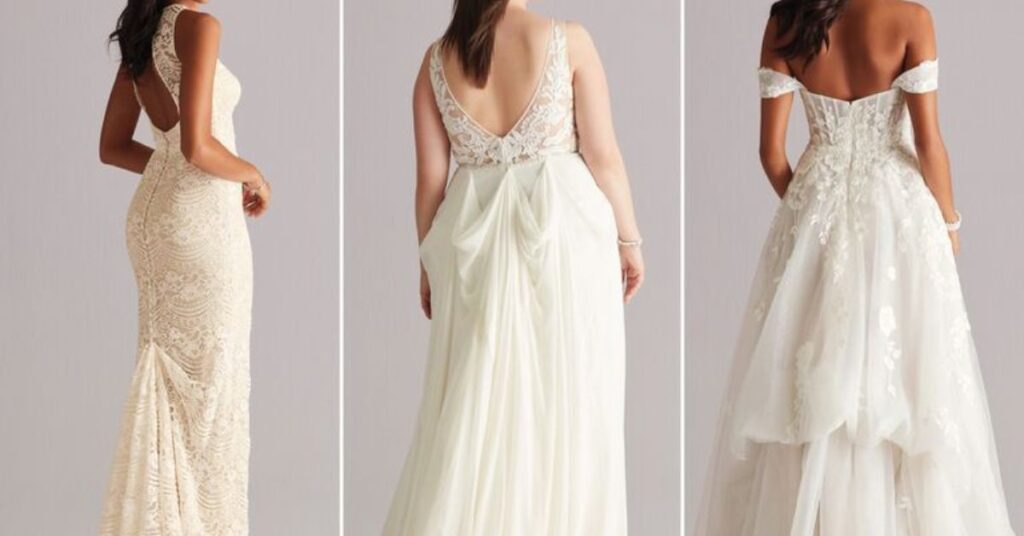
Bustle wedding dresses offer a beautiful blend of style and functionality, allowing brides to showcase a dramatic train during the ceremony while easily transforming the dress for the reception. The bustle involves gathering and fastening the train to the back of the dress, creating an elegant, layered look. This design ensures the gown remains stunning while providing the bride with the freedom to move comfortably throughout her special day.
Historically, bustles became popular in the 19th century, originally designed to enhance the silhouette by adding volume to the back of the dress. Over time, the bustle evolved into a practical feature that balances beauty with convenience. Today, bustles come in various styles, each offering a unique aesthetic that complements the gown’s design and the bride’s personal taste.
The History and Evolution of the Bustle
The bustle first gained popularity in the mid-19th century as a way to accentuate the back of women’s dresses, creating a distinctive hourglass silhouette. Originally, bustles were padded devices worn under the gown, giving volume and support to the elaborate, draped fabrics that were fashionable at the time. This style was emblematic of the Victorian era, symbolizing wealth and elegance through its exaggerated shape.
As fashion evolved, so did the bustle, becoming less about volume and more about functionality. By the late 19th century, the bustle had transformed into a more practical feature, designed to lift and secure the train of a dress, allowing for easier movement. This evolution marked a shift in bridal fashion, where the bustle became an essential element for wedding gowns, blending historical charm with modern-day practicality.
Read also this blog: Summer Formal Wedding Attire
Types of Bustles: Which One is Right for You?
When choosing the right bustle for your wedding dress, it’s important to consider both the style of your gown and the look you want to achieve. The American bustle, also known as the over-bustle, involves fastening the train over the outside of the dress, creating a draped effect that complements a variety of gown silhouettes. This type of bustle is ideal for dresses with intricate details on the back, as it allows those features to remain visible.
The French bustle, or under-bustle, tucks the train under the dress, creating a layered, cascading effect that adds volume to the gown. This style is perfect for brides who want a more traditional, elegant look. Lastly, the ballroom bustle eliminates the appearance of a train altogether by folding it entirely underneath the skirt, making it an excellent choice for brides seeking maximum freedom of movement while maintaining the full, voluminous look of their gown.
Choosing the Perfect Bustle Style for Your Wedding Dress
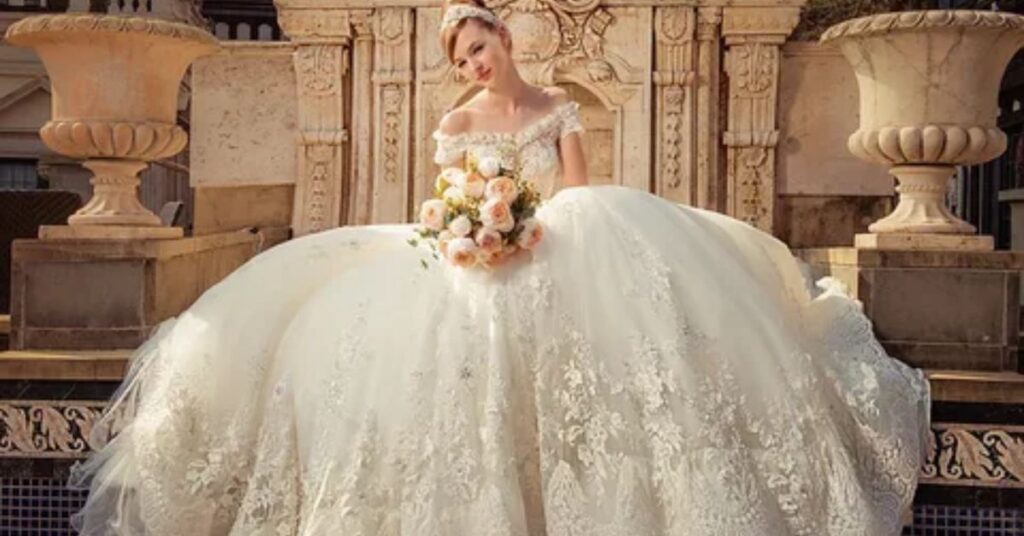
Choosing the perfect bustle style for your wedding dress involves considering your gown’s design, the type of fabric, and your personal preferences for comfort and aesthetics. If your dress features intricate back details or a dramatic train, an American bustle can highlight these elements while adding a graceful, layered effect. This style works well for dresses with detailed embroidery or embellishments, as it showcases them without obscuring the gown’s beauty.
For a more classic and sophisticated look, the French bustle offers a refined, cascading effect by tucking the train underneath the dress. This style is ideal for gowns with a softer, flowy fabric that drapes well. If mobility and ease of movement are your priorities, a ballroom bustle might be the best choice. This style folds the train underneath the skirt, allowing you to enjoy your celebration without worrying about tripping or tangling while preserving the gown’s overall volume and grandeur.
How to Bustle a Wedding Dress: A Step-by-Step Guide
Prepare the Dress: Start by ensuring your dress is on a clean, flat surface or hung up securely. Unfasten any hooks or buttons that are currently holding the train in place.
Locate the Bustle Points: Identify the designated bustle points on your gown, which are typically small loops or fabric ties. These points are where you will attach the train to the bustle.
Fasten the Train: Begin by lifting the train and attaching it to the bustle points. Depending on the bustle style, you may need to use buttons, hooks, or ties to secure the train in place. Adjust the gathers to ensure they are evenly distributed and that the bustle looks neat and smooth.
Check the Fit: Once the train is secured, check the overall fit and appearance of the bustle. Make any necessary adjustments to ensure that the gown is comfortable and that the train is properly lifted without compromising the dress’s look.
Final Touches: Have a trusted friend or bridal attendant help you with the final adjustments. Make sure everything is securely fastened and that you can move comfortably. Consider practicing walking and dancing to ensure the bustle stays in place throughout your special day.
Pros and Cons of Adding a Bustle to Your Dress
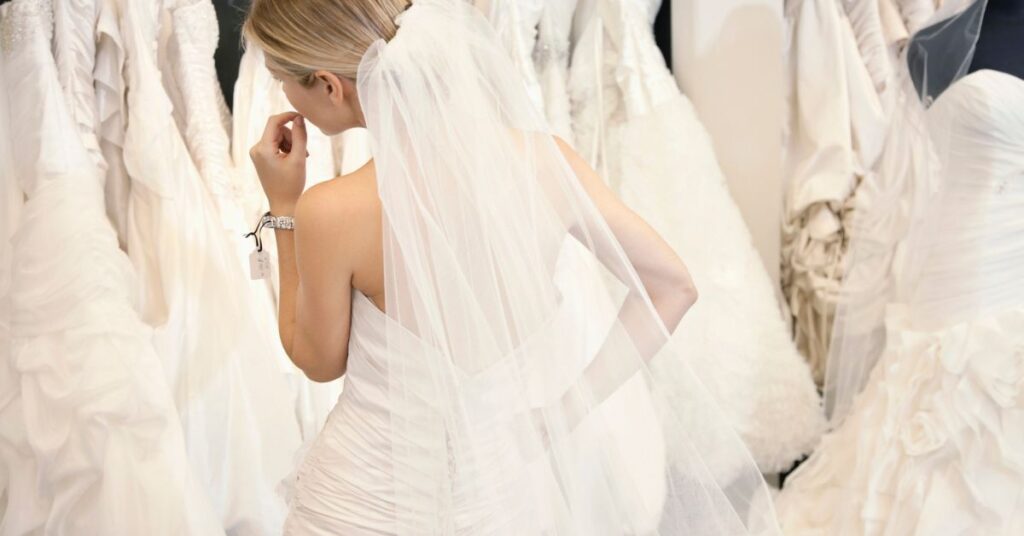
Pros:
Enhanced Mobility: A bustle allows you to lift and secure the train of your dress, giving you greater freedom to move around, dance, and enjoy your reception without tripping over the train.
Improved Functionality: With a bustle, you don’t have to worry about managing a long train during the event. This practical solution helps maintain the dress’s elegance while making it easier to navigate through various parts of the celebration.
Versatile Style Options: Bustles come in various styles, such as American, French, and ballroom, allowing you to choose the one that best complements your gown and personal style. This versatility ensures that you can achieve the desired look while maintaining comfort.
Cons:
Additional Alterations: Adding a bustle requires extra tailoring, which can increase the cost and complexity of your dress alterations. It’s essential to factor in this time and expense when planning your wedding.
Potential for Malfunction: Bustles can sometimes become unfastened or shift during the event, especially with vigorous movement or dancing. It’s a good idea to have a backup plan and someone on hand to help with adjustments if needed.
Altered Look: While a bustle enhances functionality, it can change the overall look of the dress. Depending on the style you choose, it may alter the gown’s train and silhouette, which might not be what you originally envisioned.
Bustle Wedding Dresses: Key Considerations for Brides
When choosing a bustle for your wedding dress, it’s essential to consider the style and fabric of your gown to ensure a perfect match. Heavier materials may require a more supportive bustle, like the ballroom bustle, which keeps the train neatly tucked under the skirt, while lighter fabrics might suit a French or American bustle that enhances the dress’s drape and movement. Additionally, think about how the bustle will affect the overall look of your dress and ensure it complements the gown’s silhouette and design.
Comfort and practicality are also key factors. A well-chosen bustle will allow you to move freely and enjoy your day without worrying about tripping or constantly adjusting the train. It’s important to schedule alterations well in advance to ensure the bustle is properly fitted and functioning as intended. Having a backup plan for any potential issues with the bustle can help you stay stress-free and focused on enjoying your special day.
Read this blog: Bachelor Party Games
Expert Tips for Maintaining Your Bustled Wedding Dress
To keep your bustled wedding dress looking flawless throughout your event, follow these expert tips:
Pre-Wedding Preparation: Ensure that your bustle is properly fitted during your final dress fitting. Verify that all fastenings, whether buttons, hooks, or ties, are secure and functioning. Consider doing a trial run with your bustle in place to check for any potential issues and make necessary adjustments.
Dress Care During the Event: Have a trusted friend or bridal attendant assist with managing the bustle throughout the day. They can help with any quick adjustments and ensure the train remains secure as you move, dance, and interact with guests. Carry a small emergency kit with extra fastenings and a needle and thread for minor repairs.
Post-Event Maintenance: After the wedding, carefully remove the bustle and inspect your dress for any damage or alterations needed. Professional cleaning and preservation are crucial to maintain the gown’s condition and the integrity of the bustle. Store the dress properly in a breathable garment bag to prevent wrinkles and fabric damage.
Inspiration: Bustled Wedding Dresses from Real Brides
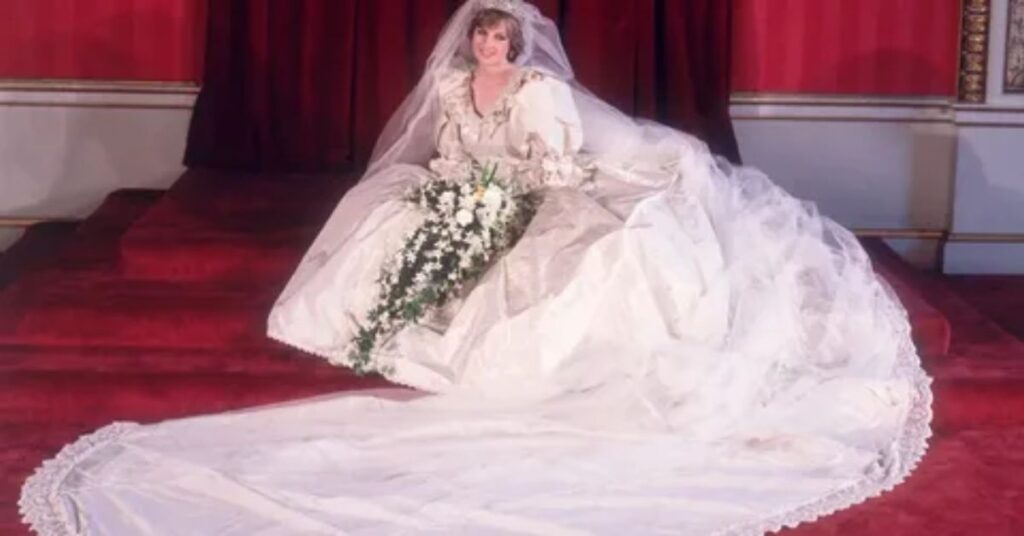
Real brides often showcase the versatility and beauty of bustled wedding dresses through their unique styles and personal touches. From elegant ball gowns with ballroom bustles that transform into chic, floor-length silhouettes, to flowing A-line dresses with French bustles that add a touch of sophistication, real-life examples provide a wealth of inspiration. Brides frequently choose bustles that complement the intricate details of their gowns, such as delicate lace or beaded embellishments, ensuring that the bustle enhances rather than detracts from the overall design.
Social media and wedding blogs are filled with stunning images of brides confidently rocking their bustled dresses. These real-life examples highlight how different bustle styles can create a variety of looks, from classic and traditional to modern and chic. Whether opting for a simple American bustle or a more elaborate French design, the personal flair and creativity of real brides offer valuable insight and inspiration for choosing the perfect bustle for your own wedding dress.
Conclusion
A bustle wedding dress elegantly combines the beauty of a dramatic train with the practicality needed for a seamless celebration. By lifting and securing the train, a bustle allows you to enjoy your special day with ease, whether you’re walking down the aisle or dancing at the reception. With various styles to choose from, including American, French, and ballroom, you can select the bustle that best enhances your gown and suits your personal style.
A bustle adds both functionality and sophistication to your wedding dress, ensuring you look stunning while staying comfortable throughout your event. Proper planning and fitting are key to making the most of your bustle, and with the right approach, you can confidently embrace this stylish feature as an integral part of your wedding attire.
Frequently Asked Questions
What is a bustle on a wedding dress?
A bustle on a wedding dress is a design feature that lifts and secures the train, allowing for easier movement and a more practical look for the reception.
What is the bustle part of a dress?
The bustle is the section of a dress, typically at the back, where the train is gathered and secured to create a more manageable and stylish look, often for easier movement during the reception.
What is bustle style?
Bustle style refers to the different methods of gathering and securing the train of a dress to create a desired silhouette and improve mobility. Common styles include the American bustle, which attaches the train over the dress, the French bustle, which tucks it underneath, and the ballroom bustle, which folds the train entirely under the skirt.
What is the difference between French and American bustle?
The main difference between a French and American bustle lies in how the train of the dress is secured:
French Bustle: The train is gathered and tucked underneath the skirt, creating a layered, cascading effect. This style provides a smooth, elegant look and works well with soft, flowy fabrics.
American Bustle: The train is gathered and fastened over the outside of the dress, often with buttons or hooks. This style creates a more structured and voluminous look, making it ideal for dresses with intricate back details.
